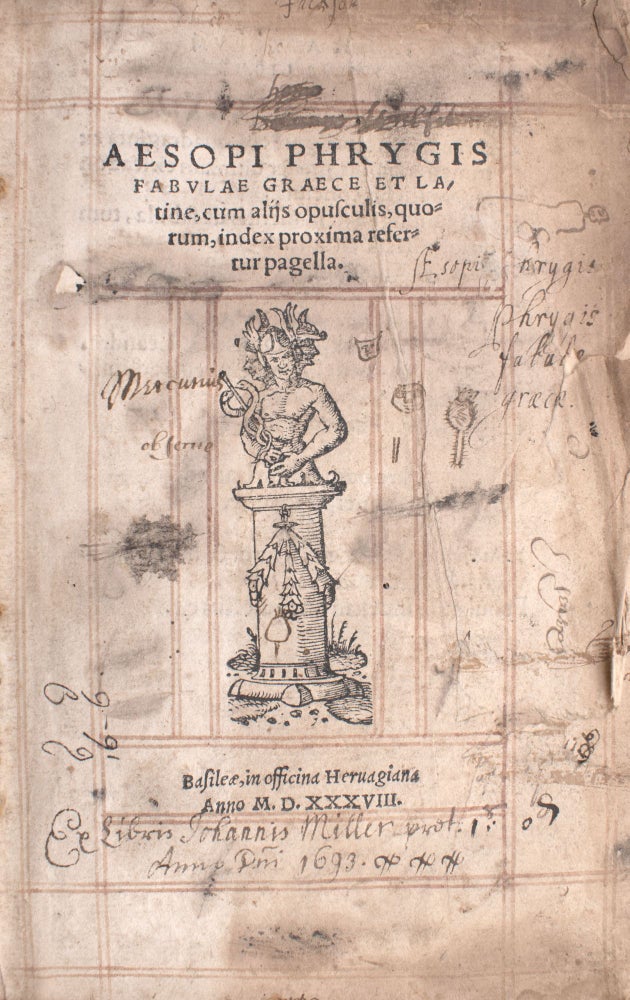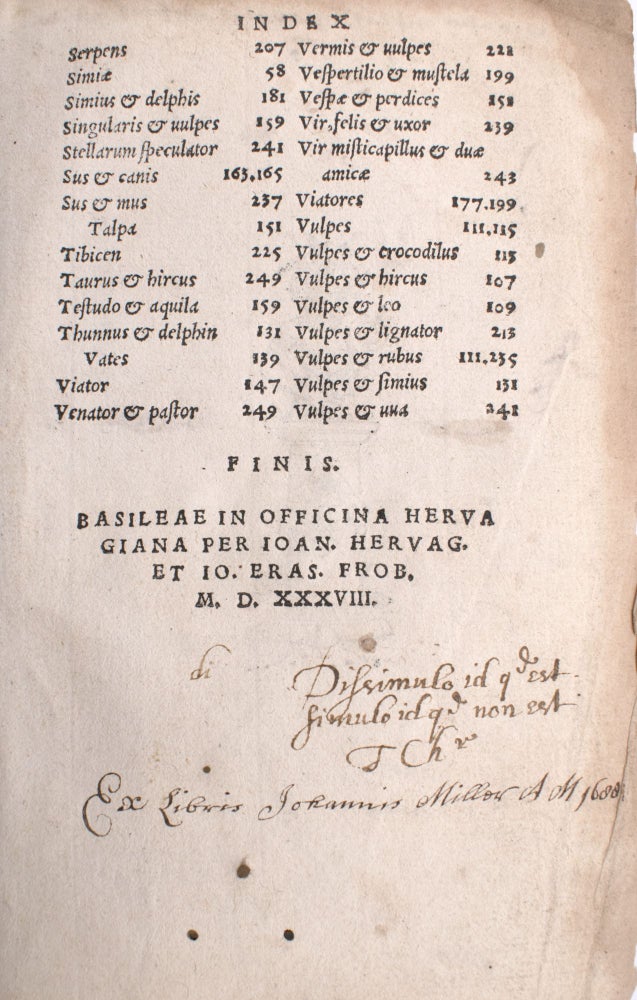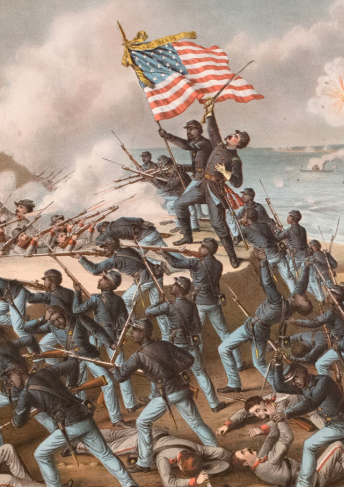With Provenance to a 17th Century Clergyman in New York
Fabulae Graece et Latine, cum aliis opusculis, quorum, index proxima refertur pagella.
Basilae: In officina Heruagiana, 1538.
Price: $4,500.00
About the item
Collection first published by Froben, 1518. A1-Z8: 393, [5] pp. 8vo. With Provenance to a 17th Century Clergyman in New York. Late 17th-century stamped-calf binding, loss to head and foot of spine, title page with borders drawn on it, some loss to title page not affecting text, annotated throughout, some worming, needs to be resewn and binding reattached, title page should be repaired. Provenance: Johannis Miller. USTC 608058.
Item #338977
With ownership signaure to the title page: "Ex Libris Johannis Miller pret. 1s. 0d Anno Dm 1693", a further ownership signature to the recto of the last leaf "Ex Libris Johannis Miller A D 1688," and annotations throughout the text. Rev. John Miller (1666-1724) was commissioned fort chaplain of the New York companies in 1692, spending 1692-1695 in New York: "Miller was the sole officiating Episcopal clergyman in the entire province of New York during the three years of his residence; his activities, as evinced by contemporary records, and his familiarity with all inhabited parts, extended beyond the confines of the city." During this time he wrote extensive notes about New York, and drew a map of the fort. When his returning vessel was overtaken by French Privateers, he threw his documents overboard to destroy the intelligence contained therein. He later rewrote many of his observations and redrew the map from memory, it's retained in his manuscripts at the British Museum (from George Chalmers in 1842), and was later published in Valentine's 1842-3 Manual. He returned to England where he was given the post of vicar of Effingham, gaining a reputation as a “worthy and respectable vicar,” and “a man of research." His library was still “preserved with great care” by his successor in the beginning of the nineteenth century, then consigned and sold in New York by Bangs and Company in 1894. A number of his books have found their way into prominent libraries and collections (Stokes' Iconography; Paltsits, Victor Hugo, intr., "New Yorke Considered and Improved A.D. 1695 by John Miller," Electronic Texts in American Studies 17).
The present work seems to have gone from him to another owner, Richard [Norton], and then to Thomas Norton; the second page has the ownership signature, and note: "Thomas Norton pretium / Thomae Dicitur [Fr] Richard". Thomas Norton could be Thomas Norton (1684-1748), Whig Member of Parliament of Ixworth Abbey, Bury St. Edmunds, Suffolk; the grandson of Col. Richard Norton, M.P. (1615-1691), intimate friend of Cromwell; and nephew of Maj. Richard Norton.
Contents include: Aesopi Fabulatoris vita, Aesopi Fabulae, Gabriae Graeci Tetrasticha, Ex Aphthonij Sophistae exercitamentis, Ex Philostrati imaginibus fabulae, Ex Hermogenis exercitamentis / Prisciano interprete, Ex Auli Gellij libro secundo, capite undetrigesimo, Apologus Aesopi Phrygis memoratunon inutilis, Homeri Ranarum et murium pugna (heavily annotated), Musaeus De Ero et Leandro (annotated), Expositio capitvm admonitoriorum aedita ex tempora ab Agapeto, Hippocratis Iusiurandum, Galeōmyomachia, hoc est, Felium & murium pugna (annotated with translations from the Greek).




